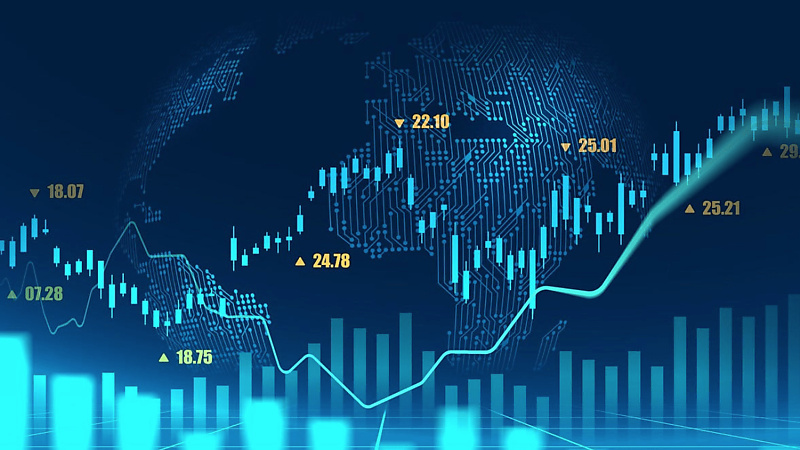Understanding CFD Trading
CFD stands for "Contract for Difference." It is a contract between two parties, typically described as "buyer" and "seller," stipulating that the buyer will pay to the seller the difference between the current value of an asset and its value at contract time. If the difference is negative, then the seller pays instead to the buyer.
CFDs allow traders to speculate on the rising or falling prices of fast-moving global financial markets. This could include everything from shares, indices, commodities, currencies, and treasuries. Because you're not actually owning the asset, it's a relatively accessible way to tap into these markets with lower entry barriers in terms of cost.
Choosing the Right CFD Broker
When starting with CFD trading, finding a reliable CFD broker is crucial. For Australian traders, choosing a CFD broker Australia who meets local regulatory standards provides an additional layer of security and peace of mind. Such brokers are regulated by the Australian Securities and Investment Commission (ASIC), which ensures they adhere to strict financial standards and conduct. The right broker will offer not only a robust trading platform but also access to ample educational resources to help beginners get up to speed.
The Importance of Leverage in CFD Trading
One of the key features of CFD trading is leverage. Leverage allows you to open a large position with a relatively small amount of capital (known as the margin). While leverage can magnify returns, it also increases potential losses, making it a double-edged sword that must be used cautiously, especially by new traders who might not yet have a full grasp of its implications.
Developing a Trading Strategy
Having a solid trading strategy is essential in CFD trading. This strategy should be based on thorough market analysis, a good understanding of the economic environments affecting the markets, and an effective risk management plan. Beginners should start with small, manageable trades to learn the ropes before scaling up their trading activities as they gain more confidence and experience.
Risk Management Techniques
Effective risk management is critical in CFD trading. This includes setting stop-loss orders to automatically close your positions at a specified price and thus limit potential losses. Also, regularly monitoring your positions and market conditions is vital to react swiftly to any market changes. Additionally, implementing take-profit orders can secure profits by automatically closing positions once a target price is reached. Diversifying your portfolio across different markets can also help spread risk and reduce exposure to a single economic event. Another useful strategy involves using trailing stops, which adjust automatically as prices move favorably, thereby protecting gains while limiting losses. Traders should also assess their risk tolerance regularly and adjust their investment strategies accordingly. Managing emotions and maintaining discipline in following a trading plan are equally important to ensure that decisions are not driven by panic or excessive greed. These methods collectively create a comprehensive risk management framework that can significantly enhance the sustainability and profitability of trading activities.
Equity Trustees and Strategic Moves
The financial world is continuously evolving, and companies such as Equity Trustees are making strategic decisions that can impact markets globally. For instance, Equity Trustees' decision to exit the Irish market was seen as a strategic move to better align with its long-term objectives. Such developments can affect market conditions and should be followed by CFD traders, as they can impact asset prices and market dynamics.
Continuous Learning and Adaptation
The financial markets are dynamic and ever-changing. Continuous learning through courses, webinars, and other educational resources is crucial for staying updated with the latest market trends and trading technologies. Additionally, adapting your strategies in response to market changes can significantly improve your trading outcomes. Keeping abreast of global economic news, understanding geopolitical shifts, and monitoring financial policy changes are also essential for making informed trading decisions. Participating in online forums and networking with other traders can provide insights and tips that are not available through traditional learning channels. Regularly reviewing and analyzing your trading performance, including both successes and failures, helps refine strategies and improve future performance. This proactive approach not only enhances knowledge but also sharpens practical trading skills, making it possible to navigate the complexities of the markets more effectively.
Conclusion
CFD trading offers exciting opportunities but comes with its own set of risks, especially for beginners. By understanding the basics of how CFDs work, choosing the right broker, using leverage wisely, and developing a coherent and tested trading strategy, beginners can set themselves up for success. Moreover, keeping abreast of major strategic financial moves, like those from Equity Trustees, can provide insightful data that inform smarter trading decisions. With diligent practice, ongoing education, and careful strategy, traders can navigate the complexities of CFD trading and potentially reap significant rewards.






